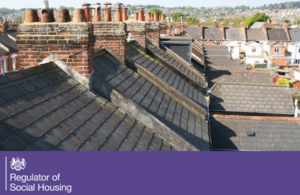Regulator of Social Housing publishes initial findings on damp and mould in social housing
RSH wrote to larger registered providers of social housing and asked them to provide information on damp and mould in their homes.

Today (Thursday 2 February) the Regulator of Social Housing published its initial findings on damp and mould in England’s social housing.
Following the coroner’s November 2022 report into the tragic death of Awaab Ishak in Rochdale, the regulator asked all larger social landlords to submit evidence about the extent of damp and mould in tenants’ homes and their approach to tackling it. This covered local authorities and housing associations who together own and manage over four million homes in England.
There is more work to do, but the regulator’s initial findings from the responses show:
- Most social landlords understand the extent of damp and mould in their tenants’ homes and take action to tackle it, but could strengthen their approach.
- The vast majority of people living in social housing have homes that are free from damp and mould. However, living with damp and mould can have a serious impact on tenants’ health and wellbeing. It is essential that landlords identify and address these issues promptly and effectively.
- Some landlords submitted poor quality responses that lacked the detail needed for RSH to have confidence about their approach to tackling damp and mould.
- While the picture is incomplete, RSH’s best estimate is that less than 0.2% of social homes have the most serious damp and mould problems, 1-2% have serious damp and mould problems, and a further 3-4% have notable damp and mould.
The regulator will now follow up directly with landlords who submitted poor quality responses and those reporting high numbers of cases of damp and mould. RSH will take regulatory action where needed.
The strongest responses from landlords demonstrated robust data on the condition of tenants’ homes, as well as processes for investigating and remedying the root causes of damp and mould, and robust oversight from boards and councillors. Poorer responses relied more heavily on reactive approaches rather than proactively looking for evidence of damp and mould, and had weaker data and evidence about the condition of tenants’ homes.
The regulator’s initial findings provide lessons for all social landlords, and should prompt them to improve the way they identify and address damp and mould. Tenants who have damp and mould in their home should tell their landlord, and landlords should act promptly to address it and the underlying issue. The regulator will introduce more active consumer regulation from April 2024, including inspections, and the quality of homes, including the presence of damp and mould, will be a key focus.
Fiona MacGregor, Chief Executive of RSH, said:
Tenants deserve quality services and homes that are safe and of a decent standard. Where there are issues, landlords need to act now to put things right, before we start our active consumer regulation including inspections of providers.
We expect all providers to continue to look at how they can improve the way they identify and address damp and mould”.
Notes to editors
1 - RSH wrote to all registered providers of social housing on 22 November 2022, asking them to provide information and evidence about the following:
- Their approach to assessing the extent of damp and mould issues affecting their properties, including how they assess the prevalence of category 1 and 2 damp and mould hazards - as defined in the Housing Health and Safety Rating System.
- In the context of that approach, their most recent assessment of the extent of damp and mould hazards in their tenants’ homes, including the prevalence of category 1 and 2 damp and mould hazards.
- Given those findings, the action they are taking to remedy any issues and hazards, and ensure that their tenants’ homes meet the Decent Homes Standard.
- How they ensure that individual damp and mould cases are identified and dealt with promptly and effectively when raised by tenants and residents.
2 - The response rate was 99%, and the evidence submitted has been initially assessed at a high level across five broad areas – assurance and oversight, surveying and records, case identification, practical response, and tracking and monitoring.
3 - In the regulator’s latest Statistical Data Return, there were 1,614 RPs providing around 4.4m homes. This comprised 1,396 private registered providers and 218 local authority registered providers.
4 - Social housing tenants experiencing damp and mould should tell their landlord. The landlord should help address the damp and mould and fix any underlying issues, and tenants can complain if this is not done effectively. Tenants who are unhappy with their landlord’s response to complaints can contact the Housing Ombudsman, who can help resolve complaints.
5 - The Social Housing Regulation Bill, which is currently in Parliament, will give the regulator new and stronger powers to proactively assess social landlords against the consumer standards. Landlords need to act now to ensure they comply with the consumer standards – including on issues relating to damp and mould – before the legislation is enacted. Reshaping consumer regulation: our implementation plan sets out more information about RSH’s work to deliver proactive consumer regulation.
6 - RSH promotes a viable, efficient and well-governed social housing sector able to deliver and maintain homes of appropriate quality that meet a range of needs. It does this by undertaking robust economic regulation focusing on governance, financial viability and value for money that maintains lender confidence and protects the taxpayer. It also sets consumer standards and may take action if these standards are breached and there is a significant risk of serious detriment to tenants or potential tenants.
7 - For press office contact details, see our Media enquiries page. For general queries, please email enquiries@rsh.gov.uk or call 0300 124 5225.